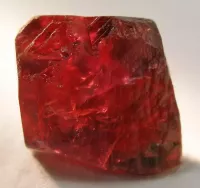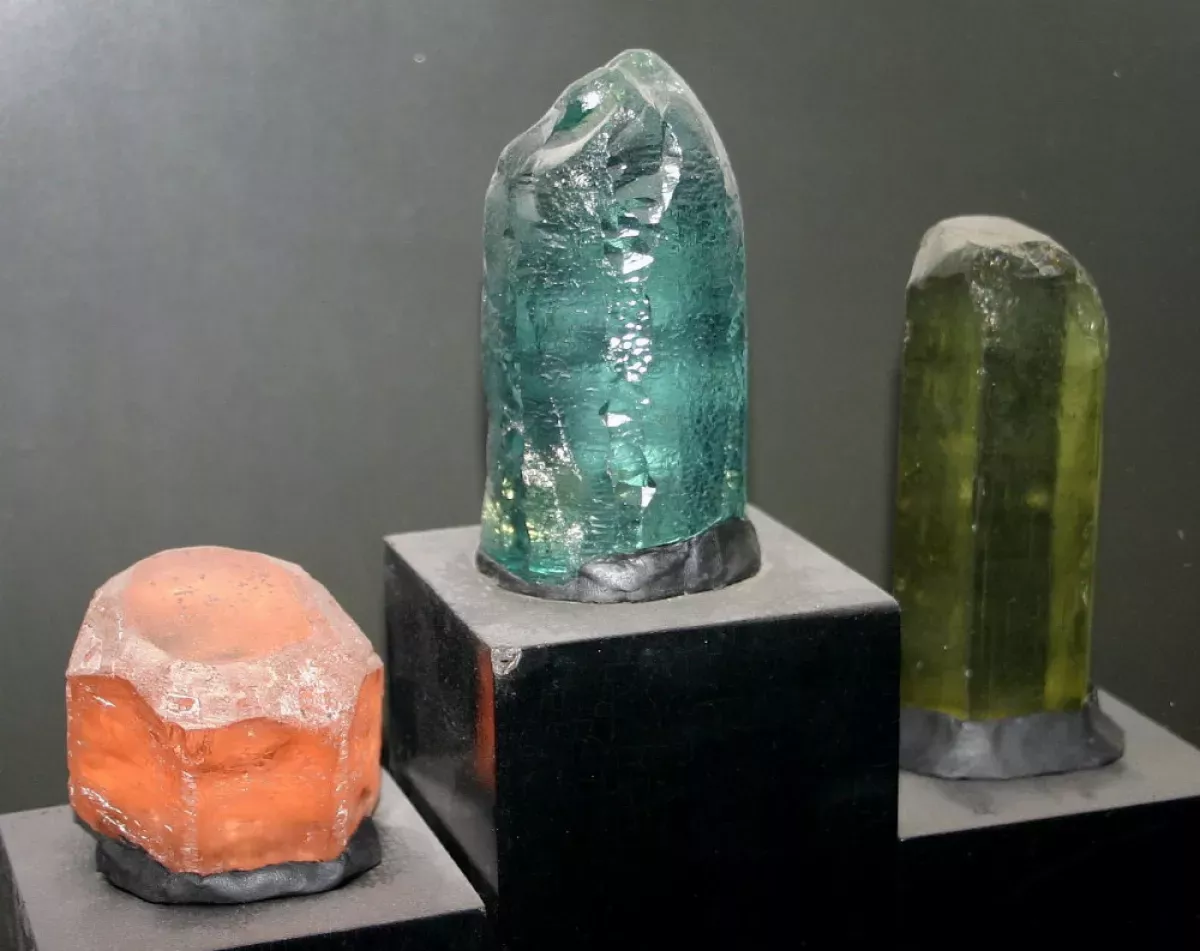Beryl is a mineral with the chemical formula Be3Al2Si6O18. It is composed of beryllium aluminium silicate. Notable varieties include emerald and aquamarine. Beryl crystals are naturally hexagonal and can grow quite large, though terminated crystals are uncommon. While pure beryl is colorless, impurities often tint it various colors, such as green, blue, yellow, pink, and red (the rarest). It serves as an ore source of beryllium.
1904: First Description and Naming of Red Beryl
The red variety of beryl, initially called "bixbite", was first described in 1904. This discovery originated from Maynard's Claim in Utah, which became its type locality. The name "bixbite" was later deprecated by CIBJO to avoid confusion with the mineral bixbyite.
1958: Discovery of Gem-Quality Red Beryl in Utah
In 1958, Lamar Hodges discovered a significant deposit of gem-quality red beryl at the Ruby-Violet Claim in Utah's Wah Wah Mountains. This discovery became a primary source for this rare variety of beryl.
1964: Commercial Production of Synthetic Emeralds by Pierre Gilson Sr.
In 1964, Pierre Gilson Sr. began commercially producing synthetic emeralds using a flux-growth method. His process involved growing emerald layers on natural colorless beryl seeds, resulting in convincing synthetic emeralds.
1998: Discovery of Emeralds in Yukon
In 1998, emerald deposits were discovered in Yukon, Canada, adding a new source to the list of emerald-producing regions.
1999: Discovery of the World's Largest Beryl Crystal
In 1999, the world's largest known naturally occurring beryl crystal was found in Malakialina, Madagascar. This massive crystal measures 18 meters long, 3.5 meters in diameter, and weighs an astounding 380,000 kilograms.
Mentioned in this timeline
Canada is a North American country the second largest in...

Ruby is a red gemstone a variety of the mineral...
Madagascar is an island country located in the Indian Ocean...
Trending
9 months ago Real ID Deadline Approaching: What You Need to Know about Requirements and Enforcement

19 days ago Zendaya and Sydney Sweeney Rumored Feud: Political Differences Cause Tension, Criticism Arises
2 months ago Kerby Joseph receives green light to play Bengals after knee injury scare.

Adam Thielen is a professional American football wide receiver who most recently played for the Carolina Panthers He is known...

2 hours ago Strategy faces Bitcoin slump; considers selling assets amid financial strategy updates.
3 hours ago Strategy's Dollar Reserve for Bitcoin Fails Amidst Sales Concern and Market Slump
Popular
Aftyn Alyssa Behn is an American politician currently serving as...
Matt and Ross Duffer known as the Duffer Brothers are...

XXXTentacion born Jahseh Dwayne Ricardo Onfroy was a controversial yet...

William Franklin Graham III commonly known as Franklin Graham is...

Stranger Things created by the Duffer Brothers is a popular...

Richard Branson is a prominent English business magnate best known...
